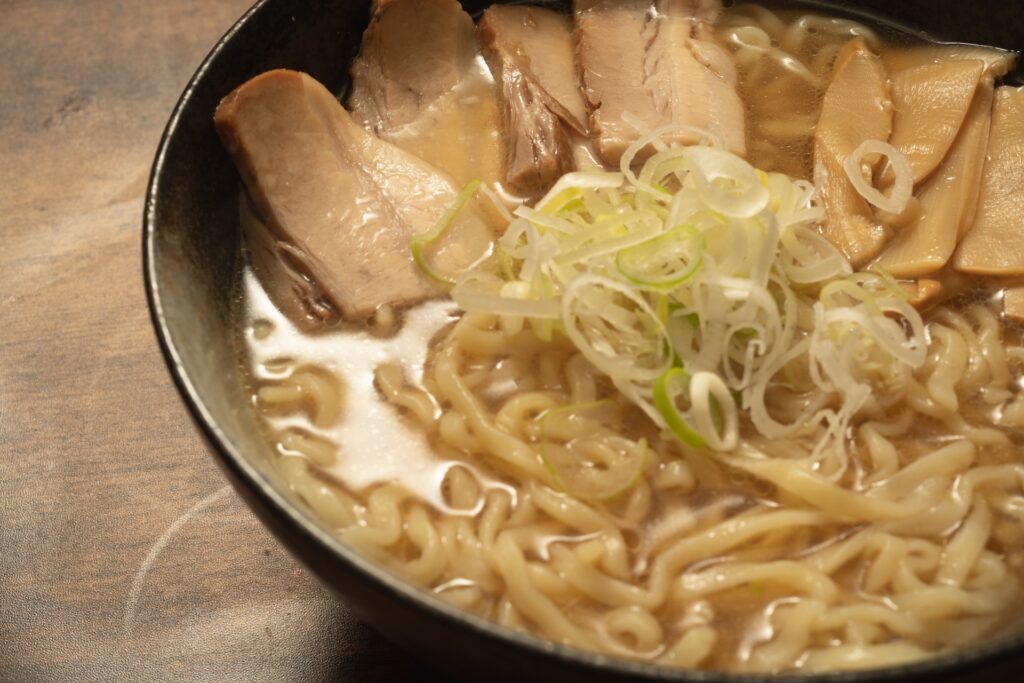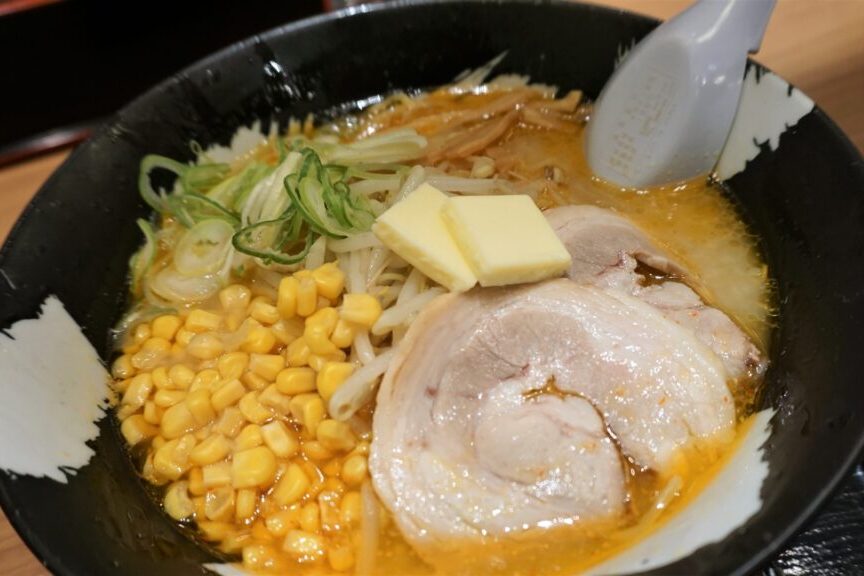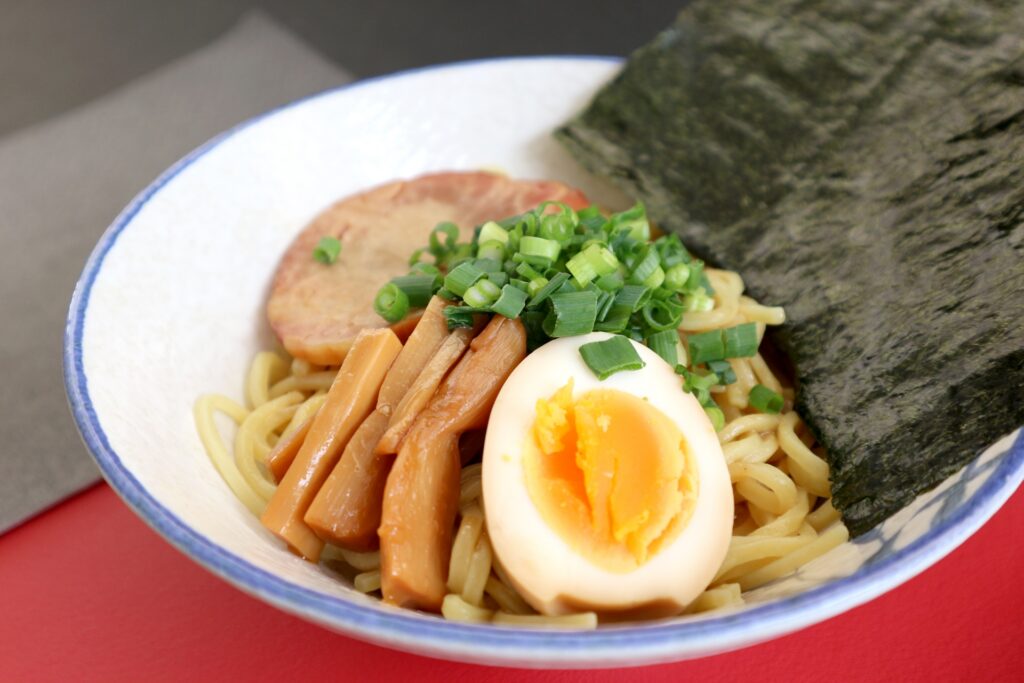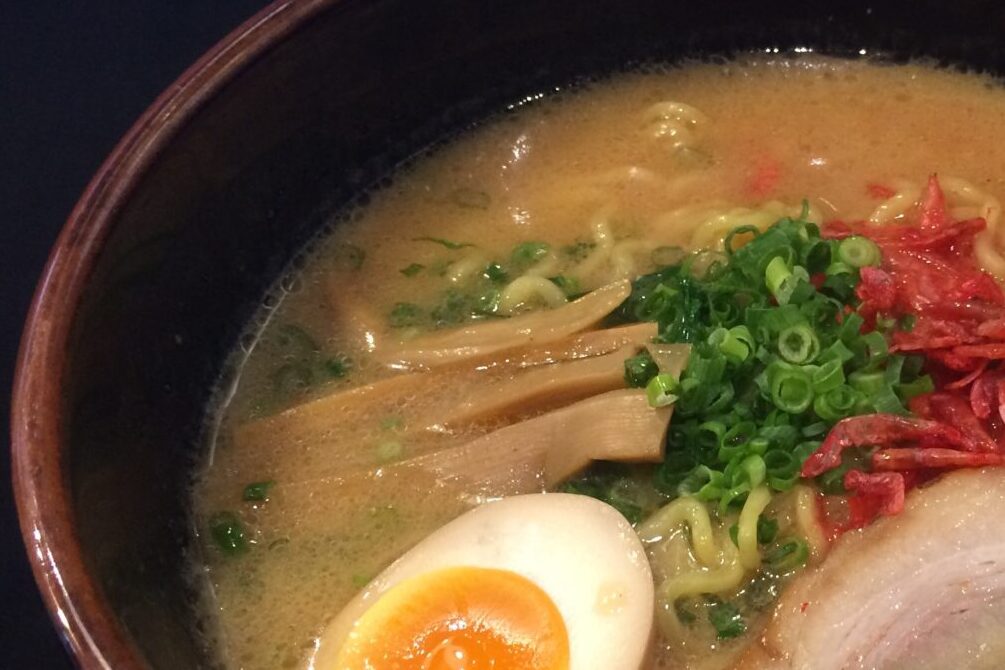
Kitakata Ramen
Kitakata Ramen is a local ramen dish originating from Kitakata City, Fukushima Prefecture. In 2006, there were about 120 ramen shops in the former Kitakata City, serving a population of 37,000. This was the highest number of ramen shops per capita in Japan. Kitakata Ramen is considered one of the “Three Great Ramens of Japan,” alongside Sapporo Ramen and Hakata Ramen.
特長
The soup of Kitakata Ramen is typically a light soy-based pork bone broth. Some shops create separate broths from pork bone and dried sardines, then blend them together. The flavor varies by shop, with some offering salt-based or miso-based versions. The noodles, referred to as “flat, aged, high-hydration noodles,” are thick (about 4mm) with a unique curl and a soft texture. The common toppings include char siu pork, green onions, bamboo shoots, and narutomaki (a type of fish cake).
歴史
The origins of Kitakata Ramen can be traced back to 1927 when the founder of “Genraiken”, Kinsei Ban, introduced his version of Chinese soba noodles. This taste deeply permeated the lives of the city’s residents and his noodle-making techniques were passed down, leading to the creation of many ramen shops like “Makoto Diner” and “Bannai Diner”.In 1975, a surge in tourism to Kitakata City was triggered by a NHK program that highlighted the city’s traditional storehouses. However, to increase tourism revenue, it was necessary to increase the duration of tourist stays. Consequently, around 1982, city officials started recommending ramen shops as lunch spots for group tourists to travel agencies.As a result, “Makoto Diner” was introduced, and its unique ramen was featured on a television program. Moreover, in 1983, Kitakata Ramen was featured in the tourism promotional magazine “Rurubu”. These exposures significantly contributed to making Kitakata Ramen known nationwide.
老麺会
In 1987, in response to the popularity of Kitakata ramen, a discussion meeting was held involving businesses related to ramen, the city, and the chamber of commerce. As a result, the “Ramen-kai” (Old Ramen Association) was established with the goal of improving the quality of ramen shops and preserving the traditional style of ramen (thick noodles, flat stretching, and curly noodles), and began activities as part of tourism PR. In 2005, the organization changed its structure to a cooperative.Among the shops in Kitakata city, those belonging to the “Old Ramen Association” display a dark blue banner that reads “Warehouse City Kitakata, Old Ramen Association”. As of October 2015, 45 shops belonged to the association.The “Old Ramen Association” publishes the “Old Ramen Association Map” irregularly, which is a map compiling member shops, and is distributed for free for tourism PR. It can also be downloaded as a PDF file from the official website of the Old Ramen Association.
代表的なお店
Genraiken (the birthplace of Kitakata ramen)
Makoto Diner (the first shop introduced as Kitakata ramen)
Bannai Diner (a foundational shop for Kitakata Ramen Bannai & Koboshi)
Maruya (shop of the first president of the Old Ramen Association)
Kitakataya (the first Kitakata ramen specialty shop in Tokyo)
Azumasa (Kurayashiki Kitakata Ramen Shop)




